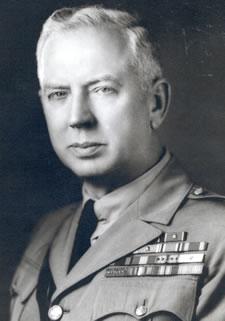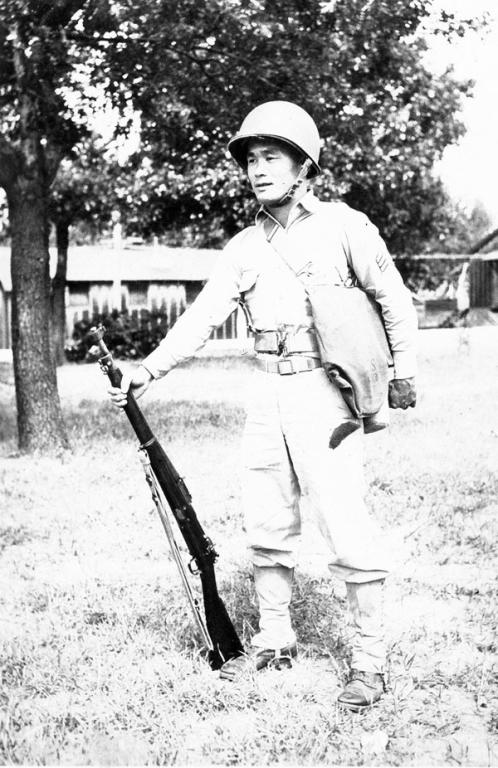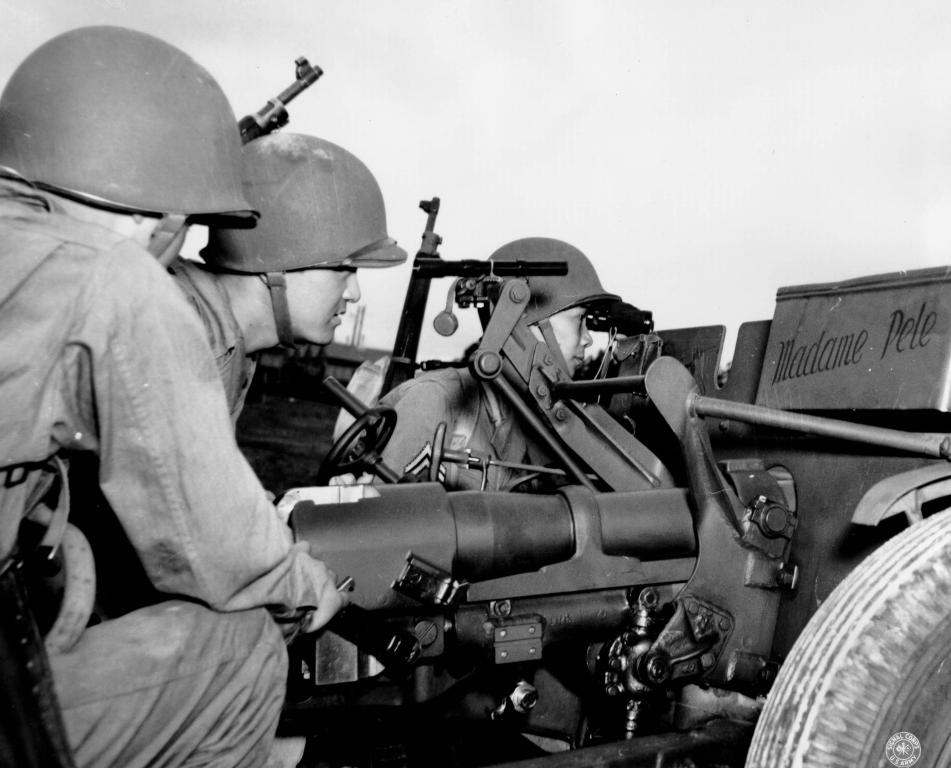-
Senior Moderator
(Milsurp Forums)



Originally Posted by
jond41403

Would a regular M1936 pistol belt be able to be adjusted enough to fit this guy? Or would he had to have had one special made? I have several pistol belts and I don't think I could adjust it anywhere near the size to fit that guy.
Two of them perhaps??? 

Bill Hollinger
"We're surrounded, that simplifies our problem!"
-
Thank You to Bill Hollinger For This Useful Post:
-
12-30-2022 09:35 PM
# ADS
Friends and Sponsors

-
Legacy Member

Reminds me of the time that I met 3 former Russian soldiers who had also been Wrestlers for the Russian army. They weren't actually Russian but were actually from Estonia and when they were called up Estonia was part of the Soviet Union. When I met them it was after the break up of the Soviet Union, Estonia had joined the EU and they were over in the UK
soldiers who had also been Wrestlers for the Russian army. They weren't actually Russian but were actually from Estonia and when they were called up Estonia was part of the Soviet Union. When I met them it was after the break up of the Soviet Union, Estonia had joined the EU and they were over in the UK working. The thing was they weren't any taller than me but every part of their bodies was bigger than mine, like twice the size, except their necks, they didn't have one, a bit like the chap in the OP. They were nice chaps; I just wouldn't want to upset them.
working. The thing was they weren't any taller than me but every part of their bodies was bigger than mine, like twice the size, except their necks, they didn't have one, a bit like the chap in the OP. They were nice chaps; I just wouldn't want to upset them.
Overweight, overaged (for the uniform and service being depicted) and not knowing how to wear a uniform properly are all the things that I hate about re-enactors. I am not exmilitary but I do know how to wear a uniform properly probably because I was taught to do so in the cadets.
-
-
-
-
The Following 3 Members Say Thank You to Mark in Rochester For This Useful Post:
-
Contributing Member


The picture is of the 1st Regiment of the Pennsylvania State Guard, not the Pennsylvania National Guard, 28th Infantry Division. which had been mobilized in 1940 as part of the US Army build up to WWII. The Pennsylvania State Guard was composted of over aged men who were undraftable either due a medical condition, critical skill for the war effort or over age. The medical requirements for what they were where for the NCO and enlisted ranks. The officers did not have any medical restrictions (probably the reason for round boy). The officers were pulled from previous war veterans. The units main function was the protection of key assets such as bridge and transportation nodes. The equipment was excess equipment from the US Army such as WWI Springfields and M1917s. Officers had to provide their own weapons.
-
The Following 5 Members Say Thank You to fjruple For This Useful Post:
-
Advisory Panel



Originally Posted by
Mark in Rochester

The patch on the big guy looks like a 442nd RCT patch
What I was trying to say is... Here's the pic in it's original and expanded form.
M1917s in this case.
-
Thank You to browningautorifle For This Useful Post:
-
Contributing Member



Originally Posted by
BEAR

Reminds of another WW2 photograph
BEAR that one is in a few of my books and the depiction reads that the look of the Luftwaffe pilots arrogance towards the British NCO typifies their Nazi doctrine that they are H*itlers Aryan race, supreme beings. You can see the smug look on his face as if to say "Look at me." yet I like the Sgt's look of the British Bulldog.
My father said only once when I quizzed him on the toughest soldiers in WWII he replied the British Tommie which I gather was due to the fact dad was born in England and AFAIK even though he was in the RAAF WWII '41 - '45 never became an Australian
and AFAIK even though he was in the RAAF WWII '41 - '45 never became an Australian citizen, as he came here in 1929 by himself at age 16.
citizen, as he came here in 1929 by himself at age 16.
-
Thank You to CINDERS For This Useful Post:
-
Contributing Member


Pennsylvania State Guard from Wikipedia
Original caption
Governor Edward Martin inspecting the guard of honor at the Third Annual Encampment, Indiantown Gap, June 23-July 3, 1945.

Forced to step down as commander of the 28th Division in 1942, because of his age, Edward Martin continued to make regular visits to Fort Indiantown Gap after his election as governor of Pennsylvania in 1943. There, in the summer of 1945, he presided over the Third Annual Encampment.
Pennsylvania State Guard
World War II
During World War II, the entire National Guard was federalized, leaving individual states vulnerable to invasion, insurrection, natural disasters, rioting, and other emergencies which could no longer be handled by the National Guard. As a result, State Guard Act signed by President Franklin D. Roosevelt on October 21, 1940, giving individual states the option to create and maintain their own military forces independent of the federal government.[3] The Pennsylvania Reserve Defense Corps was created by executive order of Governor Arthur B. James on March 19, 1941.[2] The Pennsylvania Reserve Defense Corps was organized based on U.S. Army standards, with units being organized along standard military unit sizes and drilling part-time, generally one night a week and during one full week per year.[4] On May 3, 1943, the name was changed by an Act of Assembly to the Pennsylvania State Guard.[2] The unit would serve in a homeland security role for the duration of the war.
Membership
The draft left few men available for stateside military service; men waiting to be drafted and men too old or otherwise unfit for federal duty made up the potential recruiting pool, so age standards were relaxed considerably. Membership was open to individuals aged 21 to 50, with no upper age limit for officers.[4]
Organization
Initially, the unit was organized as a single brigade, divided into three regiments, with each regiment containing three battalions, each battalion containing three companies, and each company containing two platoons of roughly thirty men each, with a total of 1,934 men making up the brigade upon creation of the force. At its peak, the force would grow to include 5,700 men organized into various units, including the following units:
1st Regiment
2nd Regiment
4th Regiment
10th Regiment
16th Regiment
1st Cavalry Squadron
C Troop, 1st Cavalry Squadron (separate mechanized cavalry unit)
1st Engineer Battalion.[4]
Equipment
Weapons provided by the state included the M1903 Springfield rifle and the M50 Reising submachine gun, although officers were expected to provide their own sidearms.[4] Private organizations also contributed equipment to units. Non-lethal supplies, including woolen socks and gloves, were donated by Chapter 44 of B'nai B'rith, a Jewish service organization, and mattresses and sheets for the Regimental Medical Detachment were donated by Liberty Chapter No. 22, Disabled American War Veterans.[5]
Duties
As a state defense force, the Pennsylvania State Guard was responsible for the stateside duties of the National Guard. This could include potentially repelling an invasion, quelling a riot, or responding to a natural disaster.
For the duration of the war, responsibilities were divided among the units of the Guard based on their geographical location. The First Regiment was responsible for guarding the bridges near the eastern Pennsylvania cities and towns of Phillipsburg, Washington Park, Lambertville, Yardley, Trenton, Norristown, Reading and Columbia.[4]
The 2nd Regiment (minus E Company) was responsible for guarding the bridges near the central Pennsylvania cities and towns of Sunbury, Northumberland, Williamsport, Jersey Shore, Muncy, Berwick, Plymouth, Wilkes-Barre, Pittston, Falls, Oil City, Tionesta, Franklin and Elmerton.[4]
The 3rd Regiment was responsible for guarding the bridges near the western Pennsylvania cities or towns of Warren, Parker, East Brady, Freeport and New Kensington, and in coordination with local authorities concerning the bridges at Pittsburgh, Saltsburg, Blairsville, Ambridge, Sewickley, Elizabeth, Monongahela, Donora, Monessen, Brownsville, and Masontown.[4]
The Brigade Headquarters Company was responsible for the 24-hour safety of the state airport at Marsh Run and 24-hour roving patrol of the bridges spanning the Susquehanna River at Harrisburg.[4]
E Company of the 2nd Regiment was responsible for covering the Clarks Ferry Bridge and the Juniata crossing and maintaining night security on the State Arsenal at Harrisburg
Last edited by Mark in Rochester; 01-01-2023 at 04:17 PM.
He is no fool who gives what he cannot keep to gain that which he cannot lose
There are no great men, only great challenges that ordinary men are forced by circumstances to meet.
-
The Following 4 Members Say Thank You to Mark in Rochester For This Useful Post:
-
Contributing Member


Mark-- That is essential correct but the weapons issued is a bit wrong. The state probably initially had very few Springfield M1903 rifles left as they were probably taken with the 28th Infantry Division upon their mobilization in 1940. That's probably why you see mostly M1917s in the pictures of the Pennsylvania State Guard. There was always a critical shortage of .30-06 rifles during WWII. I am a little familiar with Pennsylvania State Guard as i was a member of the Pennsylvania National Guard for many years.
-
Thank You to fjruple For This Useful Post:
-
Legacy Member


Originally Posted by
CINDERS

BEAR that one is in a few of my books and the depiction reads that the look of the Luftwaffe pilots arrogance towards the
British
NCO typifies their Nazi doctrine that they are H*itlers Aryan race, supreme beings. You can see the smug look on his face as if to say "Look at me." yet I like the Sgt's look of the British Bulldog.
I wouldn't want to tangle with that NCO. Also, it's still early in the war and they believe they can still win.
BEAR
-
The Following 2 Members Say Thank You to BEAR For This Useful Post:
-
Advisory Panel



Originally Posted by
Mark in Rochester

Unfortunately, this guy is the real deal - haven't been able to id him as yet
Fecal impaction.
Knew of a geezer like that locally: stank to high heaven from all the putrefaction. Gut like a drum; last time I saw him he was hobbling about on crutches and probably dead by now.
“There are invisible rulers who control the destinies of millions. It is not generally realized to what extent the words and actions of our most influential public men are dictated by shrewd persons operating behind the scenes.”
Edward Bernays, 1928
Much changes, much remains the same. 
-


















 PM
PM













